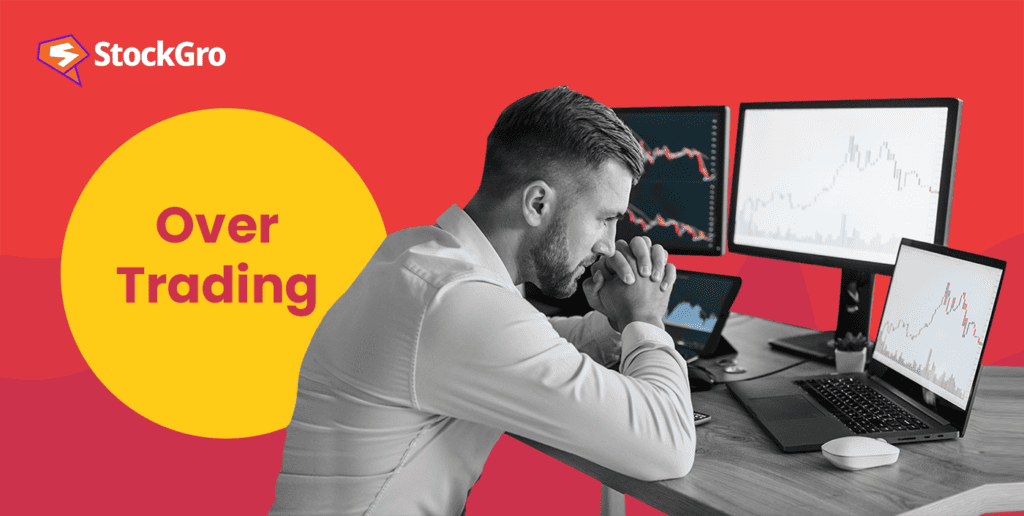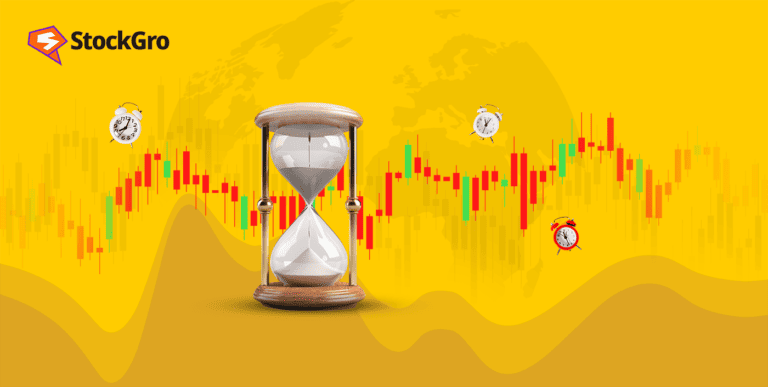
If you have been an individual trader for any length of time, you know that there is no dearth of trading opportunities in the market. Provided you have the capital and the leverage, you could theoretically take as many trades as you want.
However, this is not always a good thing. While you might think that taking multiple trades at the same time will maximise your profits, this is hardly the case for most people.
In this article, we’re going to understand what overtrading is, how you can prevent overtrading, and the prevention strategies that can help you de-risk your positions.
Also read: Trading risk management
What is overtrading?
Like we said before, overtrading is the excessive buying or selling of any securities in a short period of time.
Overtrading at the trading floor
Take stocks, for instance. Any professional trader employed by a financial firm to trade stocks will have strict rules about how much risk they can take in each trade, and in their overall positions.
These limits are calculated by meticulously taking into account the risk of the market, the potential volatility of the stocks the firm trades in, the capital involved, and the motivation for trading. For instance, a hedge fund can afford to take on much more risk with their capital than a novice trader using his own cash.
However, when these rules are broken and the trader engages in trades above and beyond that risk or capital limit, overtrading ensues.
Also read: Speculative trading
Most times, overtrading is a result of greed for commissions, which traders often earn as part of their compensation. The more profits they make for the firm, the bigger their cut is. However, without employing specific de-risking mechanisms to these trades, traders could end up losing much more than they could have ever gained.
Overtrading as an individual trader
There is a risk of overtrading even when you’re using your own capital. However, this involves another element that can cause significant reduction in gains – brokerage fees.
As an individual trader, you will not have access to OTC markets where brokerages aren’t involved. Hence, you’ll have to use a brokerage account to link and deposit your trades in a demat ID.
Brokerages, in turn, charge you for these services in the form of a commission on every trade – whether or not you make a profit. Hence, the more trades you make, the more money you pay to the middleman. If your investments don’t do as well as you expect them to and you make multiple loss-making trades in a short time, your IOUs to the brokerage can quickly add up.
Also read: Swing trading
Types of overtrading among investors
Here are some different types of overtrading that investors can fall victim to:
- Technical overtrading – Technical overtrading is when investors come to rely on technical indicators such as moving averages, MACD, or RSI to dictate trading decisions. This often leads to them chasing every signal, even weak ones, leading to frequent and unnecessary trades. Traders in this position often seek confirmations to pre-decided trades and ignore contradictory signals.
- Shotgun overtrading – This is also known as the “throw everything at the wall and see what sticks” approach. Shotgun traders often have many small positions open across several stocks simultaneously, hoping to catch any potential movement. Each trade lacks a specific analysis or justification, and is often driven by intuition or chasing tips. Such frequent buy and sell orders often rack up commissions and fees, eroding profits.
- Discretionary overtrading – Discretionary traders usually don’t have strict guidelines for how much capital to allocate to each trade, which leaves them open to making larger bets based on “gut feeling” or a false sense of urgency. Without a structured approach to trading, gains on such portfolios become heavily dependent on the trader’s mood, leading to unpredictable and potentially volatile outcomes.
- Frequency overtrading – While not inherently bad, some traders get caught up in the adrenaline rush of executing numerous trades within a short time, neglecting the importance of individual analysis and incurring high transaction costs on every trade.
De-risking your trading
Here are some tips on how you can de-risk your trades:
- Planning is key: Define your strategy, rules, and stick to them.
- Less is more: Focus on making fewer, high-quality trades based on thorough analysis and alignment with your strategy.
- Befriend stop-loss orders: These are your safety nets, automatically limiting potential losses on each trade.
- Take breaks: Step away from the charts periodically to clear your head and avoid emotional fatigue
- Be patient: Markets are dynamic, and profitable opportunities don’t disappear instantly. Wait for the right setup before entering a trade.
- Size matters: Manage your position sizes responsibly, with responsible allocation and diversification.
Conclusion
Remember, discipline and self-awareness are key to combating overtrading and de-risking your positions. By implementing these tips and constantly honing your skills, you can increase your chances of long-term trading success.

